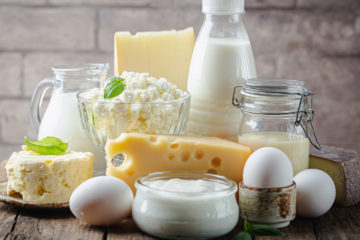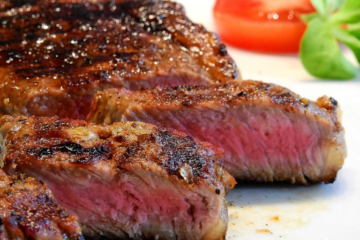Cancer strikes fear into the heart of the strongest person. It is like an unknown enemy ambushing a soldier on a mountain path. What will it do, how will it act? This post gives a simplified explanation of what cures cancer. As a result, we can better understand the rules of the game should it occur.
Does the Oncologist Cure Cancer?
Under Australian law, an oncologist is the only person legally able to bring about a cure for cancer. However, he or she does not actually do this. No oncologist or anyone else cures cancer – they can only work with the body processes that exist. The oncologist can remove some of the symptoms of cancer, but only the body itself can cure the disease.
The oncologist’s tools
An oncologist uses the tools at his or her disposal to attempt to kill or remove cancer cells. These tools:
- surgery – physically removes diagnosable cancer cells
- chemotherapy, poisons the malfunctioning (cancer) cells, the ‘seen’ and the ‘unseen’. The process also damages healthy cells (including immune cells).
- radiation, which radiates the site of known cancer cells, bringing about cell death.
- immunological therapies (which people confuse with chemotherapy), but they are not as they are not directly toxic to cells. These newer drugs interfere with various known pathways of the immune system. They may cause them to speed up, slow down or be blocked – depending on the particular pathway being targeted.
The ability of these methods to bring about a cure depends on the type of cancer it is. Some tumours are non-invasive and very slow-growing, and may never have caused a problem if left alone indefinitely. Of course, when these are removed, it appears the approach caused a cure. In fact, it did not because there was never any real threat in the first place; the body simply was not a suitable environment for cancer to grow in – no cure needed! Just to keep things in perspective.
Does Chemo cure cancer?
A 2004 study of all the randomised controlled trials done in the previous 14 years in the US and Australia looked at the number of people who survived 22 different cancer types for 5 years after diagnosis – using chemotherapy. Non-curable cancers were omitted from the study – they only looked at studies of cancers that were deemed ‘curable’. The shocking finding was – only 2.3% in Australia, and only 2.1% in the US survive for 5 years because of chemotherapy. Some cancers such as Hodgkin’s disease and testicular cancer responded well to chemotherapy with almost 36% and 42% of patients surviving for the 5 years after diagnosis due to chemotherapy. This compared well with colon 1.8%, lung 1.5%, breast 1.5% and prostate – 0%.
The comment of the researchers was that –
“as the 5-year relative survival rate for cancer in Australia is now over 60%, it is clear that chemotherapy only makes a minor contribution to cancer survival”.
[My note – This 60% survival rate is an average including more-easily cured cancers and ones with poorer outcomes – it does not mean all cancers have a 60% 5-year cure-rate.]
You might be wondering why, with such a poor outcome for chemotherapy, we even use it at all these days – let alone have it as the standard of care recommended to practically every cancer patient. This is a vital question to ask yourself before submitting to such an immune system-damaging treatment. We have to recognise the power of marketing which creates such great fear of avoiding a treatment whose cure rate is so low. There is more happening than meets the eye in this lucrative, multi-million dollar industry.
I wanted to bring up this chemotherapy study in order to discuss what actually does cure cancer since most people are under the illusion that chemotherapy cures cancer. As you can see – it does NOT. It kills some cancer cells but it does not change the environment of the body to one which is hostile to cancer.
How is cure effected by any method? What cures cancer?
What needs to happen for cancer to go into remission?
The first thing to understand is that cancer is what we call ‘a systemic disease’. Every day hundreds of incidences of DNA damage occur in our bodies and any of these could lead to the cell changes that eventually become cancer. Whether these changes occur depends on the environment of the whole body.
Two groups of actions must occur for cancer to go into remission:
- Our immune system is a complex system of cells with their own jobs to perform. Many mechanisms, directly and indirectly, disable and remove cancer cells. It can repair damaged DNA, kill actual cancer cells and, as a last resort, wall off collections of cancer cells (tumours). It is our major defence against cancer. If the body is well-fuelled and in a healthy state, the immune system can usually do its work and manage cancer threats adequately.
- The other thing that needs to happen to put cancer into remission is to slow down or halt the metabolic processes that are driving cancer’s growth. For example, one process that drives cancer is the hormone IGF-1. This process can be controlled to an extent with particular immunological cancer drugs – but it is more safely controlled by stopping eating the foods that raise the hormone in the first place. Another process that inflames cancer is oestrogen getting into cancer cells. This can be limited with the drug, Tamoxifen, but foods like soy and mushrooms are also effective in this way.
So, to put cancer into remission we need to both
- get our immune systems into peak shape, and on the other hand,
- stop driving the metabolic processes that cause cancer and make it spread.
These two processes working together are what cures cancer.
Two steps to a strong immune system
Our bodies are like expensive cars. Their design is a marvel. The more we learn about how they work, the more incredible it is that we get to go about our lives in such a vehicle. The workings of the eyes, the ears, the digestive system, the liver – I could go on and on. The immune system is similarly mind-blowing with its layers of protective cells. The problem is – the functioning of this vehicle with such immense potential is dependant on two things:
- the fuel we put into it
- the outer environment we are exposed to
When we put excellent fuel into our bodies, they can thrive even in hostile environments. Thank of it like a 4WD going through rivers, up rocks, through snow, across sand deserts.
When we put lower-quality fuel into our bodies, we are like a car that is rarely serviced, and carelessly driven. This would include excessive use of medical drugs for non-life-threatening illnesses, regular lack of sleep, constant stress and social isolation. The immune system fails to thrive under these situations so will not prove sufficient to cope with a serious attack. In this case, we can succumb to cancer but fail to do well regardless of the treatment.
A Side Comment
About 5 – 10% of cancers have a genetic component. The other 87 – 90% are lifestyle-related. But even the genetic-related cancers have a better outcome when the lifestyle is cancer-protective.
I once read a case study of a woman who had eaten an excellent diet most her life and didn’t have any other diseases; at 50 she was diagnosed with breast cancer. She realised it was likely caused when she was living in France 12 years earlier during the Chernobyl reactor meltdown. An acid rainstorm passed over her home and she was caught outside, getting soaked to the skin. She broke out in a horrible rash for weeks afterwards. This understanding fuelled her determination to do more to cleanse her body. She went into remission and is still free of cancer today.
Summary
We can’t guarantee we will never encounter significant environmental damage. But the strength of our immune system and the limiting of unnecessary day to day damage to our bodies is something we have real control over.
It is largely our own lifestyle choices that provide our bodies with the ability to cure cancer. Then we will be more likely to be the person who either never gets cancer, or who gets it and gets over it.
A person in a low-risk category for cancer, who still gets cancer, is in a better position to come through it and survive. 4 main things are needed to put yourself at a low-risk for cancer. Fill out the form on this page and I’ll send you a PDF of these 4 things.
Click to read more about Lifestyle Medicine and Cancer. Click <here> to watch the 8-minute video, ‘How not to die from cancer.’



0 Comments